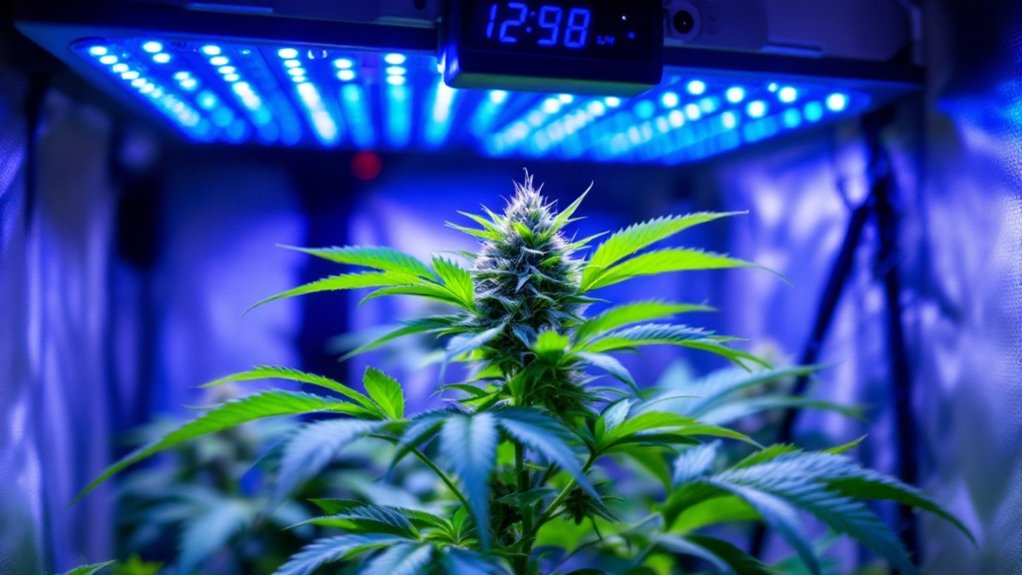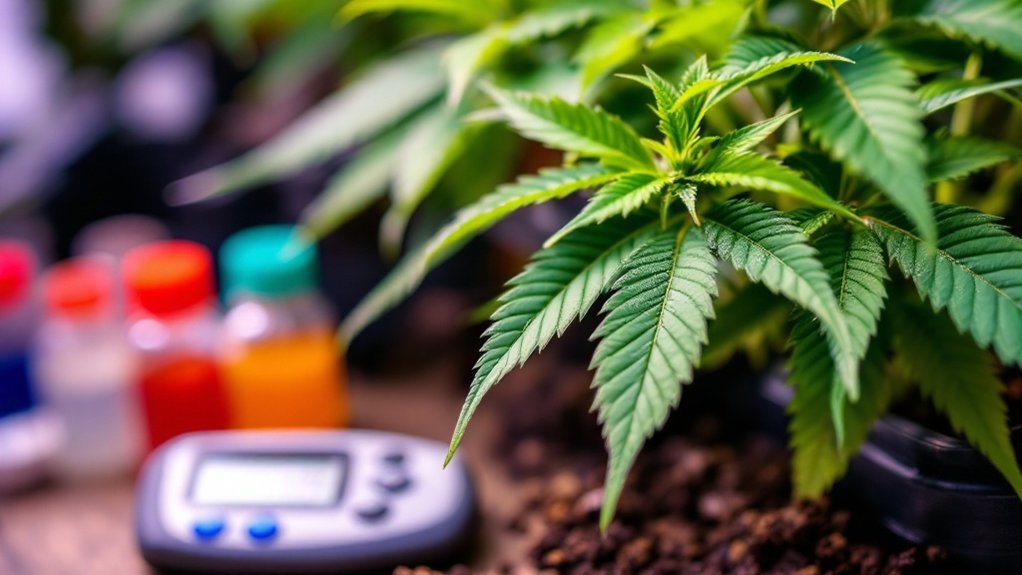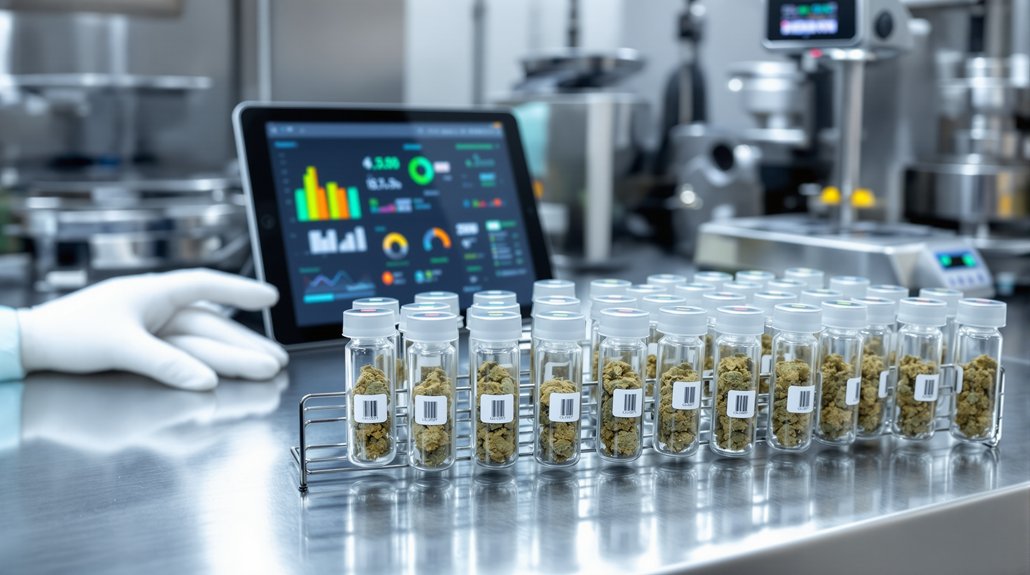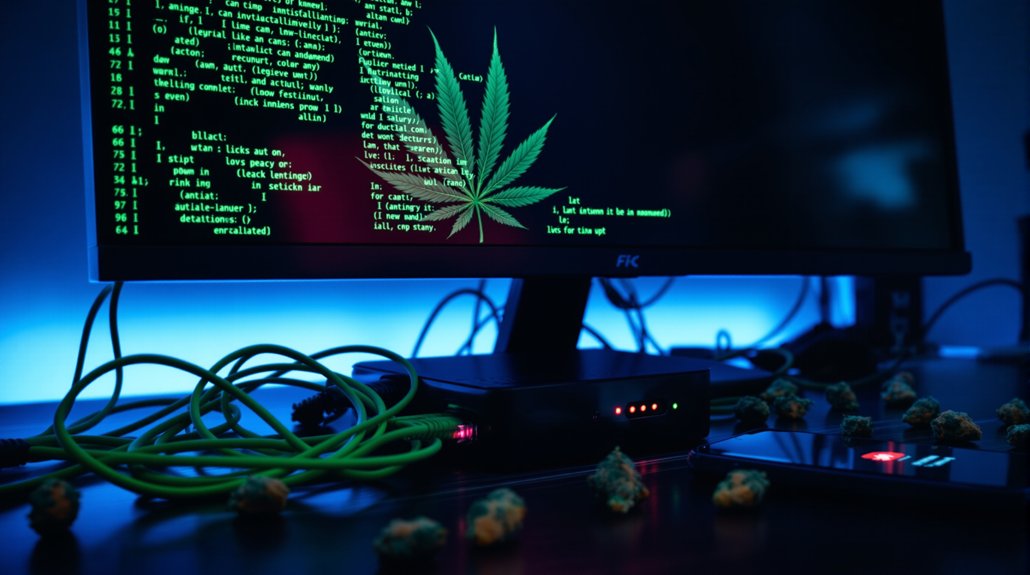Cannabis security technology is evolving rapidly toward integrated solutions for 2025. AI-powered surveillance systems now provide real-time monitoring and alerts while biometric access control creates detailed audit trails. Seed-to-sale tracking systems like METRC guarantee compliance with government regulations through real-time inventory updates. Advanced compliance management software reduces administrative burdens through automation. The integration of AI with predictive analytics represents the cutting edge of security approaches that will continue transforming the industry.
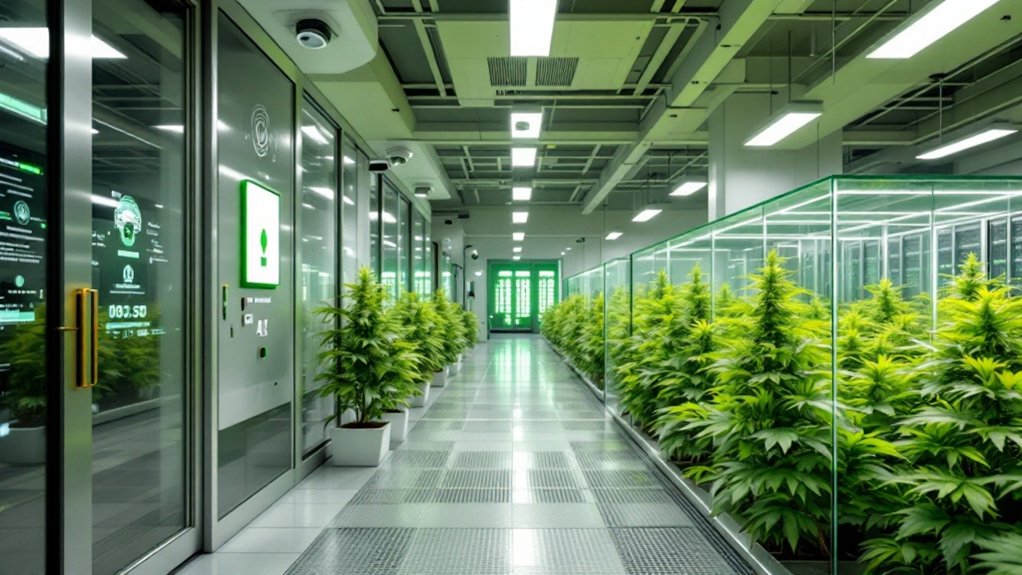
As the cannabis industry continues to mature and expand across the United States, security technologies have evolved from basic alarm systems into extensive, integrated solutions that address the unique challenges facing cannabis operators. AI-powered surveillance systems now provide enhanced monitoring capabilities for cannabis facilities, offering real-time alerts when potential security breaches are detected. These advanced systems not only deter external theft but also address internal theft—a significant concern that accounts for approximately 90% of losses within the cannabis industry. The integration of Metrc technology ensures that all cannabis products can be traced from seed to sale, adding an additional layer of compliance and security.
Access control solutions have similarly advanced, with biometric verification systems restricting facility entry to authorized personnel only. Multi-factor authentication enhances security at critical access points within cannabis operations, while creating detailed audit trails for compliance documentation. Role-based access guarantees employees can only enter areas relevant to their job functions, and modern systems allow facility managers to control access remotely through mobile applications.
Seed-to-sale tracking technology serves as the backbone of cannabis compliance procedures, providing real-time inventory updates and complete traceability throughout the supply chain. Systems like METRC and BioTrack continue to lead the industry, while blockchain-based alternatives are emerging. These platforms integrate directly with government reporting systems and offer analytics capabilities that identify inefficiencies or discrepancies in inventory management. Regular inventory checks are essential for loss prevention and compliance with state regulations.
Seed-to-sale tracking creates an unbroken digital chain of custody, forming the foundation of modern cannabis compliance infrastructure.
Compliance management software has become essential for cannabis businesses maneuvering complex regulatory landscapes. Centralized platforms manage licenses, audits, and documentation while automated alert systems notify operators about upcoming renewals or changing regulations. These digital systems create thorough audit trails and guarantee operations remain inspection-ready while reducing administrative burden. Periodic security audits and assessments ensure the continuous protection of high-value products and compliance with evolving regulations.
Artificial intelligence applications are increasingly prevalent in cannabis security, with AI tools analyzing data to identify anomalies or potential compliance risks. Predictive analytics forecast and mitigate potential security issues, while machine learning algorithms continually improve threat detection capabilities over time, enhancing accuracy compared to manual monitoring processes.
The most effective security approaches involve integrated ecosystems combining video surveillance, access control, and alarm technologies through cloud-based platforms. These extensive systems allow centralized management of all security components and offer protection beyond minimum regulatory requirements.
Mobile applications provide real-time alerts and remote system management, while API connections enable security systems to integrate seamlessly with inventory and compliance software, creating a cohesive technology infrastructure that supports both operational efficiency and regulatory compliance.
Frequently Asked Questions
How Will AI Impact Cannabis Theft Prevention Systems?
AI will revolutionize theft prevention systems through advanced video analytics that detect suspicious behavior in real-time.
Machine learning algorithms can identify unusual patterns, automatically track potential threats, and minimize false alarms by distinguishing between employees and intruders.
Predictive analytics aggregate data from multiple sources to anticipate high-risk periods, while AI-integrated biometric systems strengthen access control.
What Encryption Standards Protect Customer Data in Dispensary Systems?
Dispensary systems typically implement AES-256 bit encryption as the industry standard for protecting customer data in databases and during transmission.
HIPAA-compliant encryption protocols safeguard patient information in medical dispensaries, while TLS 1.3 secures online transactions and customer portals.
Many operations employ tokenization to replace sensitive identification data with non-sensitive equivalents.
Homomorphic encryption is emerging as an advanced solution that allows data analysis while maintaining encryption throughout the computational process.
Are Biometric Security Measures Compliant With Privacy Regulations?
Biometric security measures can be compliant with privacy regulations when properly implemented. Compliance requires obtaining explicit user consent before collecting biometric data, implementing strong encryption during storage and transmission, and establishing clear data retention policies.
Organizations must follow state-specific regulations like BIPA in Illinois or CCPA in California, which mandate transparency about what data is collected and how it’s used.
Regular audits and documentation of compliance efforts help maintain adherence to evolving privacy laws across different jurisdictions.
How Quickly Can Remote Monitoring Systems Alert Law Enforcement?
Remote monitoring systems can alert law enforcement within seconds of detecting a verified threat.
These systems employ AI-powered surveillance that continuously analyzes video feeds, allowing remote operators to validate genuine security concerns immediately.
Once operators confirm an actual threat, they can simultaneously issue verbal warnings through integrated audio systems while notifying authorities via established communication protocols.
This verification process considerably reduces false alarms, which typically expedites police response times to legitimate incidents.
What Insurance Coverage Exists for Cannabis Technology Security Breaches?
Insurance coverage for cannabis technology security breaches typically includes cyber liability policies that protect against data breaches, network security failures, and ransomware attacks.
These policies generally cover notification costs, forensic investigations, legal expenses, and business interruption losses. Most insurers offer $1 million per occurrence/$2 million aggregate policies, though many cannabis businesses require higher limits of $5-10 million.
Coverage remains limited due to federal regulations, with approximately 30 U.S. insurers now offering cannabis-specific policies compared to only 6 in 2020.


